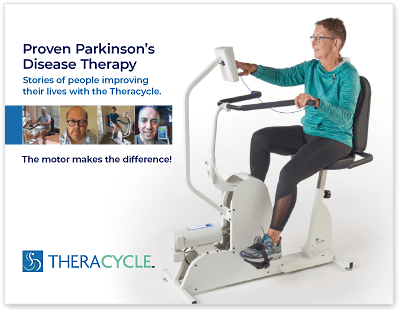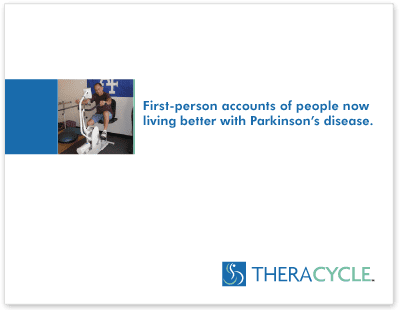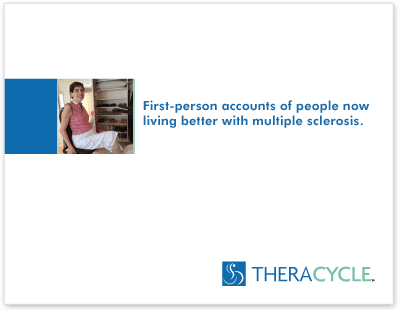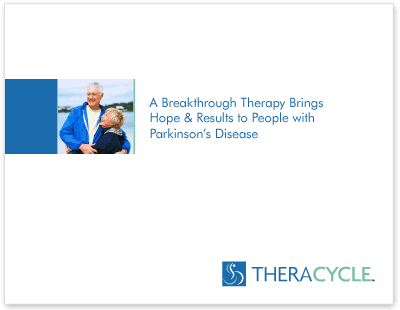- ›
- Stories
- ›
- Your Stories
- ›
- Scaling New Heights with Parkinson’s: Climbing Mt. Kilimanjaro
Stories
Scaling New Heights with Parkinson’s: Climbing Mt. Kilimanjaro
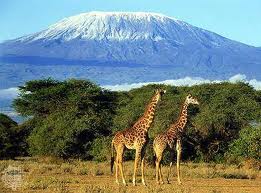
One of the blogs on our blogroll is “About Parkinson’s Disease” — an online destination we stop by from time to time. Operated by Robert Rodgers, Ph.D –who launched Road to Recovery from Parkinsons Disease back in 2005, this blog highlights five years of continuous interviews with people who have Parkinson’s Disease and which reveal there are many therapies that help people reverse symptoms.
Robert was inspired in his mission by the experience of his own mother who lost her battle with Parkinson’s in 1998. Since then Robert is on a daily path to search for natural therapies that are safe and cause no harmful side effects. As he puts it: “I hold the belief that the body knows how to heal itself. It just needs a little help remembering how.”
While I highly recommend you check out Robert’s book “Road to Recovery From Parkinson’s Disease”, and read the variety of posts on his excellent About Parkinson’s Disease blog, one of his many interviews with PD people stands out for me…
Nan Little’s 2011 description of the adventure she and her husband experienced climbing Mt. Kilimanjaro with a group including climbers with Parkinson’s disease and others with multiple sclerosis inspired us to republish it here on our blog.
Many have written about their path through Parkinson’s– Nan Little’s led to the summit of the tallest mountain in Africa and her encouraging words:
“You don’t have to climb Kilimanjaro to be empowered…you can just get on a bike to experience freedom from some symptoms.”
Here from Robert Rogers’ blog is Nan Little’s memoir of her inspiring trip to the summit and beyond…
Climbing Mt. Kilimanjaro
August, 2011
This is about climbing Mt. Kilimanjaro, the highest peak in Africa, 19,340 feet, about one mile higher than Mt. Rainier in my state of Washington. Kili is the tallest free-standing mountain in the world. My husband and I were asked to be a team, one with an illness and the other supporting the diseased person. There were 14 teams, 4 with Parkinson’s and 10 with MS, all of us led by Lori Schneider of Empowerment Through Adventure, who personifies the name of her organization. Burdened with MS, she climbed the seven summits, the highest peak on each continent, including Everest. She chose to lead this climb to show the world that people with neurodegenerative diseases need not be constrained from living their dreams. In the aftermath of the climb, it is clear from the many posts on Facebook and Empowerment Through Adventure that this was a life changing experience for many in the group, particularly those younger ones afflicted with MS. For me at age 65, it was not life changing or life affirming, but it was certainly an Adventure. I’ve already had those types of experiences along the way. One important lesson I learned early in my relationship with Parkinson’s is that I am who I am. The disease has not changed my essential character. My traits, good and bad, are perhaps enhanced in certain circumstances due to PD, but the way I approach life and other people has remained stable. Climbing this mountain was the most difficult physical thing I have ever attempted. My husband and I trained for over seven months with packs laden down, climbing thousands of steps and going up and down local mountains, hills in comparison with Kili. Enabling me to even think of making such an effort was the strength I had gained through Pedaling for Parkinson’s. By biking at high rpms several times each week, I had essentially eliminated my PD symptoms. I was justifiably concerned about not biking for nearly three weeks. Nonetheless, we were as ready as a 65 and 66 year old can be. Unhappily, on the flight to Tanzania my husband caught a cold that morphed into bronchitis and chest congestion by the time of the climb. It also meant that he avoided others in the group so as not to infect them. Doug’s relentless coughing kept both of us awake when we were hoping and needing to put some sleep in our physical reserve banks. He probably averaged about 3 hours of sleep per night. His pulse ox (measurement of oxygen in the blood) often measured in the low 70% whereas mine held between 89-92%, meaning I had much more oxygen to draw on with each breath than he did. Plus I wasn’t coughing. Others have detailed the stats of the climb, 131 Tanzanian staff to haul food, water, tents, toilets and gear up the mountain (15 of these dedicated staff were guides), two American guides, a Parkinson’s doctor and her PA assistant, and four canisters of oxygen. We spent five days getting to high camp at 15,500’, a long long night summiting the mountain and much of the 7th day returning to the entrance gate. Ours was the Machame route. I think Machame must mean “harder than the other routes” in Swahili. This was not a walk in the park at high elevation. Summit Night We spent the first several hours of the 5th day getting to high camp, 15,500′, which was higher than most of us have ever been in our lives. Many were already sick from the altitude or from the pills to avoid altitude sickness but everyone attempted to summit. We ate and received directions from the head guide as to how the night would proceed. The slowest group would start first after a couple of hours of “sleep”, then the large mid-speed group would start 45 minutes later, finally followed by the four mountain goats who would pass us all and get there first. Sleep was out of the question, particularly with the big cough. It was cold, 15 degrees and windy, and despite layers and layers of warm gear and hand warmers in our ski mitts, it was impossible to stay warm when moving slowly. Just before we left camp at 10:45 pm, my husband whispered, “I know you can make it.” That kept me going most of the night. The girl with the worst MS followed me up to about 16,800’ at which time I heard her mutter that she was falling asleep and was afraid she would fall over backwards and knock someone else off the mountain. Her fears were utterly valid. Our lead Tanzanian guide did not have authority to send someone down so we waited about 20 minutes in the deepening cold and wind while he scampered up the mountain to find the head guide, return, assess the situation and get her and her teammate on the way down. We continued until about 17,500 feet where Doug had to bail because he was not getting enough oxygen to continue. We went through the “find the guide” routine again until he was safely on his way down after assuring me again of his confidence in me. I realized I couldn’t feel the end of one thumb. We had one additional long stop during which I announced I was just going on or I would become too cold to move. Our little group continued, sometimes picking up or dropping people as we struggled up the rocks. My fingers wouldn’t work at all so the guide had to get my partly frozen water from in my pack and feed it to me as if I were a baby. He unwrapped GU and Shot Blocks and stuffed them in my mouth. Through it all, young Ines from Barcelona who has MS stayed with me, pausing when I paused and wordlessly encouraging me to continue. On we went, eventually being caught by our leader, Lori, who had had to send her father down. All this time I didn’t know how Doug was doing. He had been coughing up stuff, possibly blood, when he headed down. I learned hours later it was not blood but I didn’t know at the time. The sun rose long before we reached Stella Point, the false summit, but with its rays came a little warmth and the knowledge that I most certainly would complete this climb. Finally we stepped over the rim. I wept and weep again just thinking of it. We took a quick photo of my banner and headed along the rim walk for another hour, up another 600’, to reach the actual summit. Along the way we passed lots of members of our group, most of whom were sick, dizzy, nauseous, or complaining of big headaches. But they were utterly joyful that they had stood on the roof of Africa. We shared many hugs and lots of concern as to how they were really doing. During this whole event, I never had any sign of altitude sickness although in the summit video I look like Marshmellow Woman. I don’t know if I could have walked all night with a headache or nausea as many others did. After an hour or so of relatively flat walking, we reached the summit. More banner videos and tears, joy tempered with exhaustion and relief, concern about Doug and thoughts of my mom who died a few weeks before the trip, but who believed in me even as she worried I had taken on too much. I wanted to stay and look around at the beautiful view, but our head guide thought otherwise, so off we went back to Stella Point. I realized I had not taken my PD medications and was several hours late, so my guide and I stopped so he could help me. The others all went down. From our perch we could see our high camp tents on skier’s right. We could also see the three women who went ahead of us on skier’s right. My guide headed left. The camp got further and further away. At one point, across the way we saw the guide who had taken my husband down and he assured me that all was well below. After an eternity we came upon a group of guides who were hunting for stragglers. We turned right and bounced down through the scree. Thirteen hours and 44 minutes after setting off in the night, I returned to high camp where Doug stood waiting to hug me and thank the guides for bringing me safely down. A short rest, lunch, pack our bags and off to the next lower camp. I had stood at the top of Africa for about fifteen minutes. I’m glad I did. Take Away Points Climbing Kilimanjaro was not about getting to the top. The emotional joy of reaching that goal was undeniable and clearly demonstrated on the video I made at the top (You Tube nanlittle1). I’ve been thinking about what was most important to me about the climb and I think it was the preparation for months ahead, the anticipation of meeting everyone and trying something very difficult, the transition in my own thinking about myself as a person with Parkinson’s to a person who will climb a mountain, whether I get to the top or not. I loved meeting all the people and watching those with MS come to grips with who they are essentially as people. It was fun to see so many let go of the fear of their disease as they recognized the depths of strength that were in them all the time. Climbing Kilimanjaro was more about thinking beyond limitations. I checked on Google and learned that I am probably the oldest woman with Parkinson’s to summit Kilimanjaro via the challenging Machame route. Whether I am or not, many people have told me that this effort has inspired them to think of themselves differently even though they have PD. I never thought of myself as an athlete, but after being diagnosed with PD, I am stronger than I have ever been. Training to ride across Iowa twice in RAGBRAI with Pedaling for Parkinson’s provided the base conditioning that allowed me to train for Kilimanjaro. Prior to the climb, my doctor told me I’m probably one of the most physically fit 65 year old women in the United States. It still astonishes me that I’m physically stronger with PD than without it. Although my PD symptoms intensified after the climb, I’m finding that each day as I cycle and rest the problems diminish. I can see me returning to my pre-climb self. I do not believe that people can do anything we set our minds to. We have physical, mental and fiscal limitations. Nonetheless, it’s likely that we can be in control of our lives and our bodies more than we are often led to believe. We can not only Dream the Impossible Dream; we can strive to achieve it, however modest or wild it may seem. Cycling changed my life with Parkinson’s. Unfortunately, not everyone can try it. But many who don’t believe they can do it, even with DBS and severe symptoms, can cycle and experience some level of relief from PD. You don’t have to climb Kilimanjaro to be empowered. Hopefully you can just get on a bike to experience freedom from some symptoms. Or you can define one summit, achieve that and try another.
###
Originally published at:
http://www.blog.parkinsonsrecovery.com/climbing-mt-kilimanjaro




